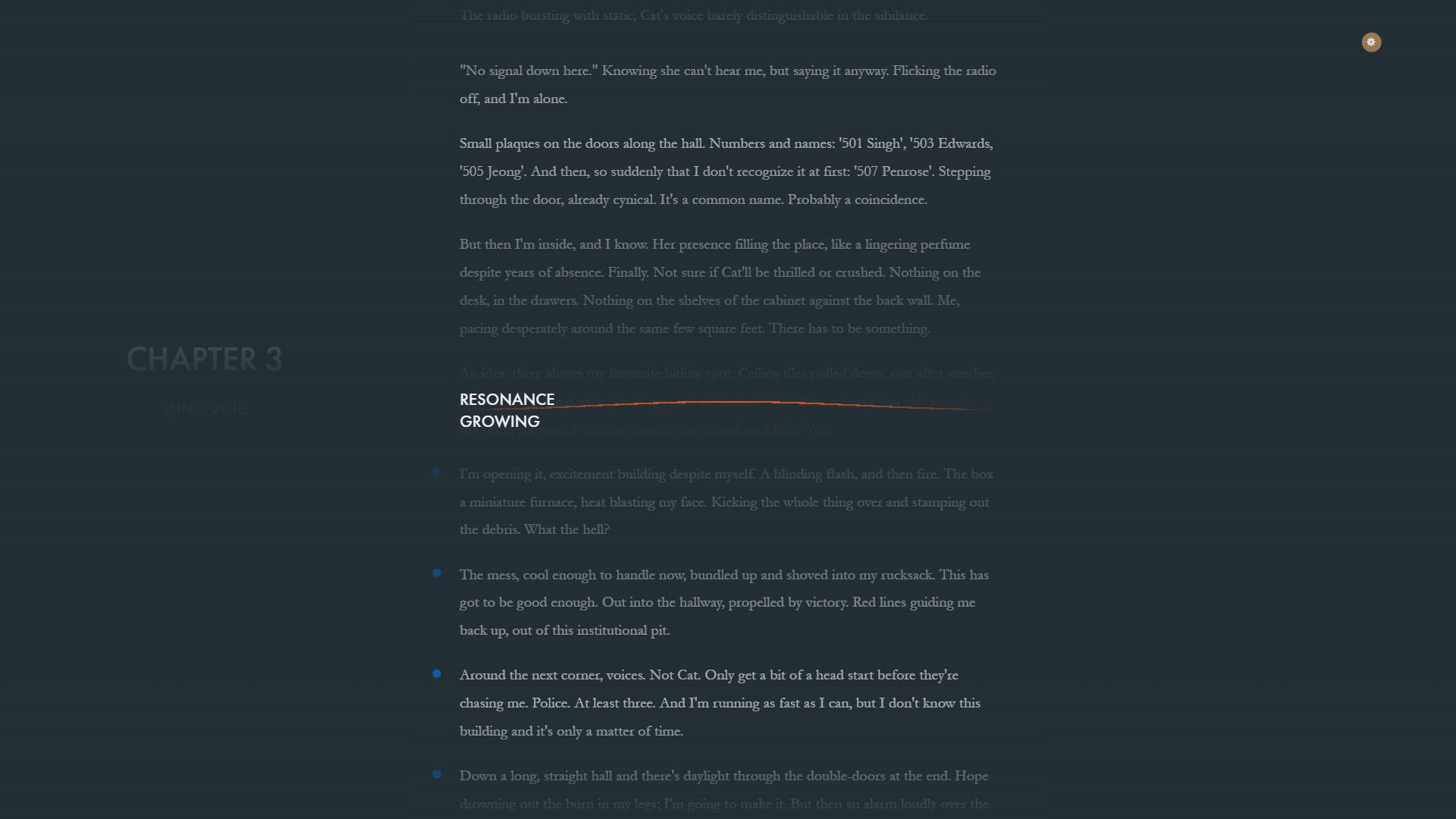Before I started playing Penrose, I had begun to fear I was losing my capacity to read. When I’d sit down to work each morning, I’d already be drowning in unread text from the day before – 85 open browser tabs, a dozen PDFs, and stacks of half-read books spread across the floor, coffee table, and sofa arms. Some days, all the open tabs and files would crash my laptop as soon as I opened the lid. Other days, my brain would crash before I could even make it through a paragraph, short-circuited by my own greedy desire to learn about anything other than what I was already reading – the history of Roman coins, the speculative links between Moebius Syndrome and schizophrenia, the geologic history of Antarctica, a neuroscientist who tried to teach animals to play musical instruments.
PenrosePublisher: Doublespeak GamesDeveloper: Doublespeak GamesAvailability: Out now on PC, Android and iOS.
Michael Townsend, who developed Penrose through his Toronto-based studio Doublespeak Games, describes it as a 50,000-word “non-linear, interactive novella.” To me that sounded like another brick in the wall of the text-based tomb I had interred myself in, being slowly embalmed by the fruitless fluids of my own curiosity. But I also liked Townsend’s work, including A Dark Room, the cryptic survival clicker game that had become an unexpected hit on the App Store in 2013. In the years since, he’d pursued a career of studied minimalist game design, tinkering with unassuming ideas that quietly morph into elaborate arboreal contraptions. He uses games as a medium for thinking more than doing, which can sometimes make his work seem formless and withholding, and other times startlingly immersive and urgent.
Penrose tells the story of a brother and sister searching for clues about their mother, a scientist who disappeared under mysterious circumstances when they were children. In practice, it’s less of a narrative than a kind of open-world puzzle game that uses text as a scrollable landscape. It has more in common with memento mori-style games – like Her Story, Return of the Obra Dinn, Myst, or even Metroid Prime – a linguistic peephole into some tragic set of past events that have insisted on spilling over into the present.
The game opens in the third of five chapters, with Peter Penrose, a troubled art student who’s agreed to drive Catherine, his sister, into the desiccated sprawl of northern Nevada to explore the abandoned laboratory where their mother, Marie, once worked. Peter has no real memories of his mother; he was only a few months old when she was last seen alive. But Cat, who was seven at the time, can’t forget her.The disappearance reshaped her life, leaving her anxious and uneasy, everything she’d thought of as fixed and permanent has become eerily tenuous and light as a feather, liable to be blown away in the next light breeze.
